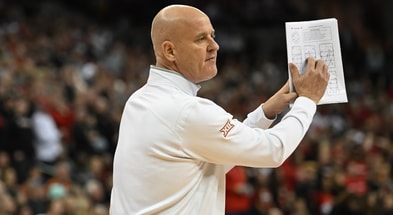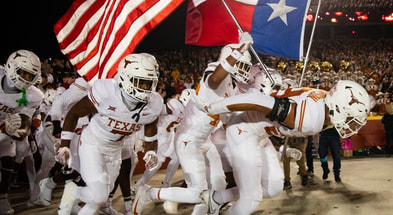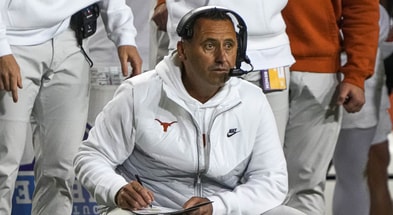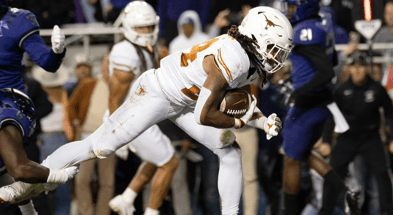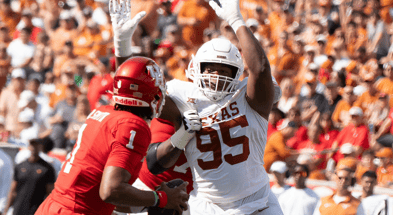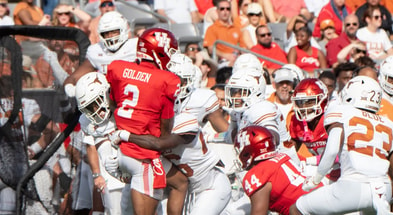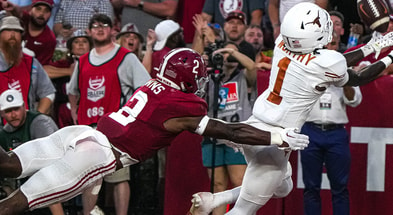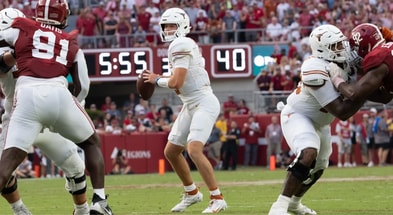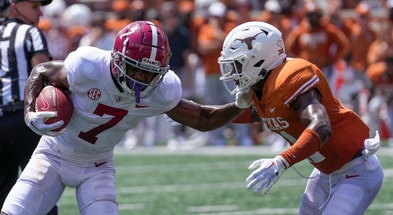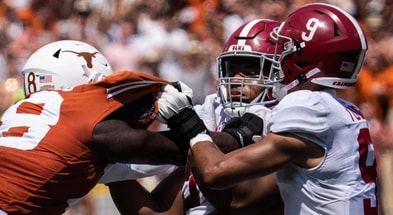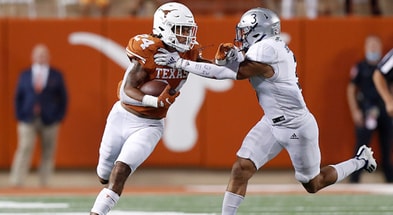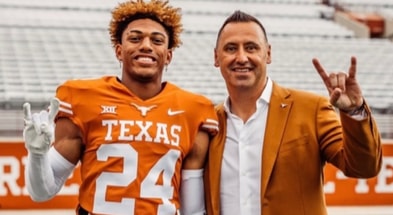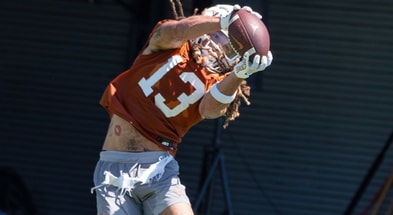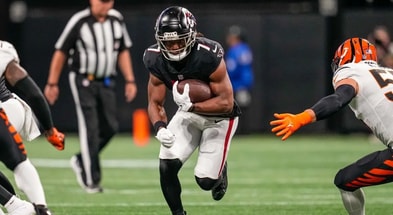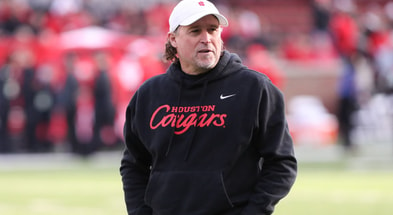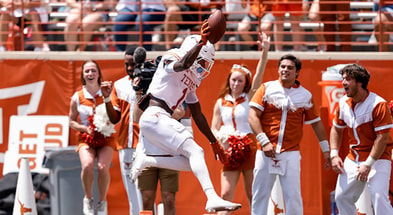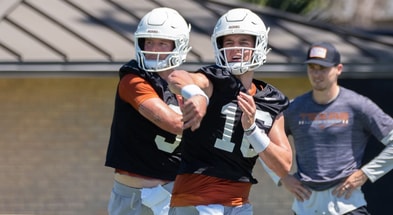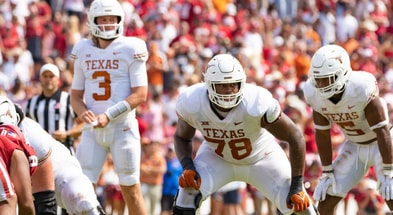Is Texas any better than in 2021?
Texas’ loss to Texas Tech was one of the more emotionally deflating for fans I’ve seen in some time.
[Get ONE MONTH of Inside Texas Plus for $1!]
There’s a lot of reasons for the big emotions around the game. One is the rivalry between Texas and Texas Tech right now, which is particularly intense because over a short period of time the University of Texas left Tech behind in the Big 12, poached their ultra-popular and successful basketball coach Chris Beard, and beat them in the recruitment of transfer Quinn Ewers. Consequently, Tech hates Texas right now as much as they ever have and new head coach Joey McGuire is harnessing the hatred to consolidate his position in Lubbock.
Another factor is the way the game played out. Texas looked fantastic early, built a two-score lead which they maintained deep into the second half folding late with multiple short and ineffective offensive possessions paired with a defense which couldn’t get off the field on money downs (3rd and 4th). In other words, exactly how they lost six games in a row back in 2021.
Has anything changed? Is Texas any better than in 2021??
Right now, I think a lot has actually changed and the circumstances of the Tech loss were somewhat incidental. But there are a few key factors which have to be discussed in moving past the emotions of this loss to fully understand the dynamic at play with Texas football right now.
Texas’ second half offensive malaise against Tech
A key ingredient to every gut-wrenching Texas loss of the Steve Sarkisian era is the following dynamic. In the first half the Longhorns get after their opponent with a clever play script and some terrific drives, often involving an explosive run by Bijan Robinson or pass to Xavier Worthy. In the second half, the script dries up and Texas cannot consistently execute as teams load up the box to prevent Bijan (or Roschon Johnson) from protecting a lead with a steady diet of runs.
Such was the case against Tech.
Bijan got 10 carries after halftime which yielded 57 yards at 5.7 ypc with a touchdown and a fumble that ultimately gave Tech the last bit of good fortune it needed. On the surface, those numbers sound solid and the complaint about his lack of touches doesn’t resonate. However this is all clouded by the fact one of those runs was a 40-yard touchdown scamper.
So otherwise, nine carries for 17 yards at 1.9 ypc with an overtime fumble.
This differentiation makes clear the reason Texas’ second half drive chart went:
- Four plays, eight yards, punt
- Eight plays, 75 yards, touchdown (long run)
- Three plays, two yards, punt
- Three plays, -1 yard, punt
- Five plays, 17 yards, punt
- Five plays, 42 yards, field goal (two-minute drill against prevent defense)
- One play, zero yards, fumble
Boom or bust with a good deal more bust than boom. In the last two years of the Bijan/Sarkisian partnership at Texas, the Longhorns have had a boom or bust run game.
It’s not necessarily a problem with Bijan or Sarkisian either. Rewatching and charting all the second half plays made clear the primary issue was Texas’ inability to consistently block well enough to prevent a disruptive Tech D-line from blowing a lot of plays up. Jaylon Hutchings and at times Tony Bradford caused problems for freshman Cole Hutson on multiple plays. Texas also had some issues against Tyree Wilson either due to bad tight end blocks or failing to create enough hesitation from the big Edge on the backside of a few plays.
In short, Texas’ offensive line isn’t good at consistently executing the myriad schemes they run to generate positive gains. It’s like the inverse of the Tom Herman inside zone non-variety hour, where the Longhorns were pretty good at picking up steady gains with the run but rarely hit home runs.
At one point in the offseason I projected Bijan Robinson might run for 1,600 yards this season at 6-7 ypc. Why? Because of a brilliant offensive line? Terrific run schemes with bruising blockers across the front?
No. Because Texas was going to pair big-armed Quinn Ewers with Isaiah Neyor to one side of the field and Xavier Worthy to the other. Against that kind of vertical stress it becomes impossible to get numbers around the box and teams have to accept yielding some ground, even against a dangerous runner like Robinson. The Longhorns didn’t have any of those young men on the field when fading against Texas Tech.
Currently Bijan has 67 carries on the year for 412 yards at 6.1 ypc with seven rushing touchdowns. This puts him on track for 201 carries for 1,236 yards at 6.1 ypc with 21 rushing touchdowns for the year. Good, but not as explosive as expected and primarily because all of the run stuffs by opposing defenses (holding runs to two yards or less) inflict the double whammy of reducing his per carry totals and also reducing possessions for Texas by forcing quick punts.
College football belongs to playmakers
After the loss to Tech, the easy place to place blame is on the coaching staff for all the various miscues along the O-line or defensive coverages for reducing the efficiency of the offense and getting beat on 4th down.
Here’s the truth. Texas is currently ranked 10th in the country by FEI (opponent adjusted efficiency data), despite its 2-2 record. The offense is ranked 16th, the defense is ranked 23rd. They’re 2-2 rather than 3-1 or 4-0 due to bad luck and injuries more than any other factor.
Over the 16 quarters of football they’ve played, they had their big-armed transfer quarterback on the field for five of them. The back-up quarterback (and the back-ups behind him) have been healthy for maybe one quarter of football since the starter went out.
You could argue the defense is actually much better “coached” than the offense because they don’t have Bijan breaking long runs or Xavier Worthy running by defenders to create big plays. The defense doesn’t have a single dominant pass-rusher across the front but have to manufacture pressure with movement and complex, zone-replacement blitzes which require a good deal of timing and cohesion across the unit. They have to come by their success with greater chemistry because the Edges who define this scheme aren’t routinely inflicting negative plays on the offense.
This is likely to be the case for much of the season, although the offense should get more consistent on a down-to-down basis as the young O-line continues to improve. The defense might get more explosive on the edges if younger players emerge down the stretch or perhaps if some of the defensive tackles catch fire as the weather cools down.
The biggest factor to this 2022 season though is adding more explosive plays on offense. The Longhorns will have a much larger margin for error if Worthy is playing in the second halves of games and/or Quinn Ewers is flinging bombs all over the field which preclude defenses from loading the box to stuff the run, trigger punts, and run more plays at the Texas defense.
As we saw in the Tom Herman era, trying to finish well above .500 in the Big 12 by grinding out wins with precision and mistake-free football is not a winning strategy. Especially if you don’t have Sam Ehlinger running the show on offense with his knack for picking up third downs and avoiding turnovers. It’s not the Sarkisian play anyways. The philosophy for Texas is to avoid getting into narrow, tightly fought games with Big 12 teams employing aggressive strategies by simply blowing their doors off with big plays.
If the Longhorns can get the explosive playmakers back on the field and maintain their relatively cohesive play on defense through conference play, they may not even need to get much luckier to still finish the season playing for the Big 12 title in Arlington come December.
